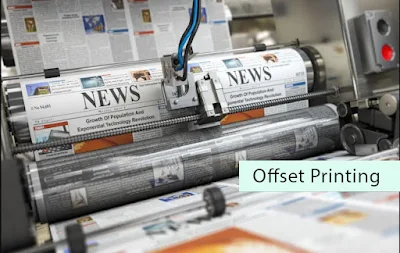Introduction to Offset Printing
Offset printing, a method where inked images are transferred from a plate to a rubber blanket and then onto paper, has been around for over a century. It’s prized for producing high-quality prints at large volumes, making it the go-to choice for everything from magazines to product packaging. But as we head deeper into the 21st century, offset printing is undergoing a significant transformation.
Offset printing: What is it?
The process of offset printing involves transferring inked pictures from a plate to a rubber blanket and subsequently onto paper or another medium. It is well known for its capacity to generate consistent, high-quality prints, especially when printing in big quantities. For many years, offset printing has served as the foundation of the printing business for everything from books and newspapers to brochures and packaging.
The Drive for Eco-Friendly Printing
Nowadays, sustainability is a need rather than a trendy term. The printing industry is under pressure to reduce its environmental impact as businesses and consumers alike grow more environmentally concerned. The potential of offset printing to adopt greener practices is inextricably linked to its future.
Reducing Waste in Offset Printing
Chemicals, water, and paper are only a few of the abundant resources used in offset printing. But more and more contemporary printers are implementing eco-friendly procedures that cut waste. For example, enhanced recycling methods guarantee that used materials are returned to the production cycle, and new technologies reduce paper waste by optimizing print runs.
Eco-Friendly Inks and Paper
Using recycled paper and eco-friendly inks is another important step in the direction of sustainability. Technologies for waterless offset printing and vegetable-based inks are becoming more and more popular. Vegetable inks are a more environmentally friendly option since they use natural oils rather than ones derived from petroleum and so emit fewer volatile organic compounds (VOCs).
Additionally, recycled paper is getting more popular, and a lot of printers are using supplies from certified sustainable forests. As a result of these initiatives, offset printing is becoming a more environmentally friendly choice for businesses trying to cut down on their carbon footprint.
Instantaneous Quality Assurance
Real-time analysis of print quality by machine learning algorithms allows for the automatic adjustment of ink levels and other settings to guarantee consistency between prints. This not only improves print quality but also lessens the need for expensive, inefficient reprints. costly and wasteful.
The Future of Offset Printing
Offset printing has a promising future because of developments in technology and sustainability. In order to become more environmentally friendly, the industry is employing sustainable materials, cutting waste, and researching waterless printing techniques. Simultaneously, offset printing is becoming more versatile and efficient because to cutting-edge technology like automation, artificial intelligence, and hybrid printing systems.
The Usage of 3D Printing Methods
While it is still in its early stages, 3D printing is beginning to gain traction in the offset printing sector. To provide more dynamic and customized printing solutions, certain printing companies are experimenting with the combination of offset and 3D printing technologies.
In conclusion, offset printing has a bright future.
Offset printing will evolve at the nexus of technology and sustainability. Offset printers are stepping up to the challenge as demand for eco-friendly practices rises by utilizing waterless printing techniques, cutting waste, and implementing greener inks. Simultaneously, improvements in efficiency, quality, and flexibility are being brought about by technological breakthroughs such as AI, automation, and hybrid printing systems.

